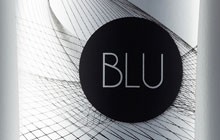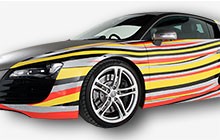Design Choices Matter All Along the PET Supply Chain
PET plastic is one of the most recycled materials on the planet. Yet the ability of PET reclaimers to meet the growing demand for rPET material is often undermined by packaging choices by brand owners, bottle designers and manufacturers.
To get a final, marketable rPET product, recyclers need to separate ink, label adhesive, coatings or other bottle packaging materials from the pure PET plastic. They typically achieve this by placing bottles in a hot caustic bath for about 15 minutes — a process that divides any non-PET material such as caps, label stocks and adhesives, which float, from the clean PET plastic flakes, which sink. When incompatible label materials go through this process, they can stick to the PET and contaminate final yields. Therefore, recyclers are able to garner the most rPET material when packaging materials such as labels, caps and closures are designed to easily separate out during the recycling process.
Creating a sustainable Bottle-to-Bottle application requires brands, packaging designers and manufacturers to produce PET packaging that works in harmony with the recycling stream, especially the sink/float washing process. The APR suggests choosing packaging materials that adhere with its Design for Recyclability guidelines, including using label materials with a gravity of less than 1.0 and avoiding problematic types of labels, such as pressure sensitive (PS) and full wrap shrink sleeve.
But the issue isn’t just education. Increasingly, brands are recognizing that design is a critical component in promoting efficient PET recycling. Yet there is still a lack of packaging options on the market that are both recyclable and offer the same performance, marketing and shelf appeal benefits as non-recyclable options. Again, the challenge for brands in using sustainable packaging materials is identifying innovative solutions that are recycle friendly and offer consumer appeal. We think we have an answer.
Switchable PS Label Adhesive Pilot Successfully
To help brands meet their goals for bottle recyclability and design, more label designers and manufacturers are working to develop PET packaging technologies that adhere to APR guidelines and promote Bottle-to-Bottle applications.
We have introduced CleanFlake™, a “switchable” PS label adhesive for PET bottles. “The goal was to give brand owners the same adhesive and design benefits as PS adhesive labels, while giving recyclers a label that is easy to remove and 100 percent recyclable,” Mitch Rackovan, global beverage technical leader for label and packaging materials at Avery Dennison. Using proprietary technology, the label is designed to easily detach from a PET bottle during the recycler’s sink/float process for better recyclability.
To test how the switchable label technology would perform in a full PET recycling atmosphere, Avery Dennison collaborated with brand owners to develop sample label designs using the technology and to conduct Bottle-to-Bottle trials with several mid-sized production recyclers. The technology was developed to work seamlessly with a reclaimer’s existing equipment, so participants were only asked to resume their typical processes and monitor the results.
Now You Can Switch to Labels that Close the Recycling Gap
At the end of the Bottle-to-Bottle trials, Avery Dennison asked recyclers how the bottles with its label adhesive fared compared to the control group without labels. They specifically looked at variables such as contamination levels, rPET yields and ease of use.
“The response was overwhelmingly positive,” said Rackovan. All participants agreed that the Avery Dennison adhesive separates easily from the PET flake, reducing contamination and improving their PET yields. In fact, when the Avery Dennison labeled bottles were compared with the non-labeled batch, the final PET flakes were identical. Best of all, recyclers didn’t have to change any of their processes to get the results.
PET recycling has the potential to provide a long-term sustainable stream of plastic material for billions of bottled products. Yet incompatible packaging design continues to undercut many efforts of rPET stakeholders. By offering packaging solutions that make PET recycling more economical for reclaimers and feasible for brand owners, Avery Dennison is helping close the loop for Bottle-to-Bottle recycling and see its true potential realized.







